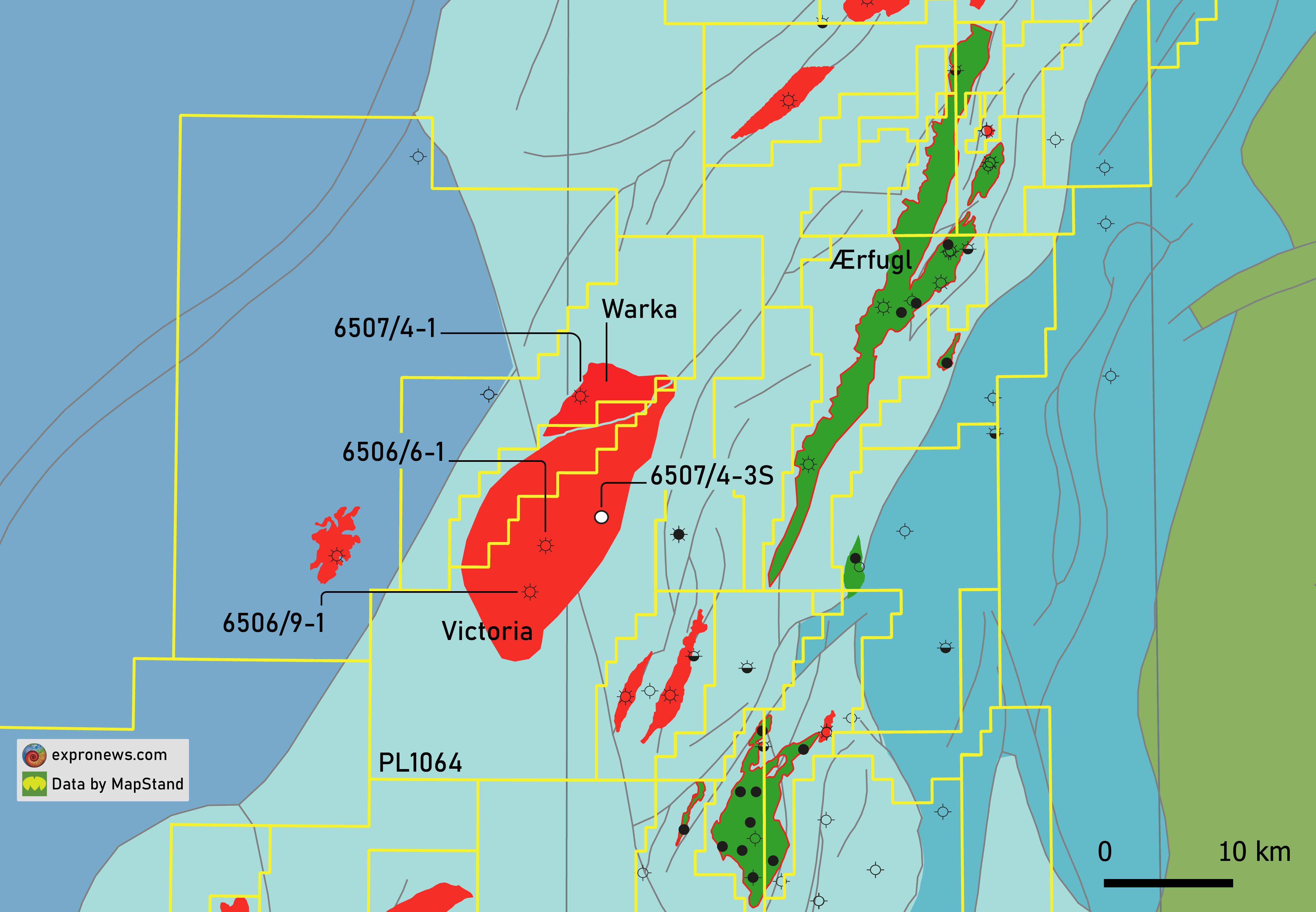According to NPD Factpages, the Jurassic Victoria discovery in the Norwegian Sea is unlikely to be taken in production. But what if a gas accumulation in the Cretaceous overburden of Victoria is to be found? That is what operator ConocoPhillips is currently working on in PL1064 through drilling well 6507/4-3S. With a prognosed reservoir depth of 3,766 m, it looks likely that Cretaceous Lange Fm sandstones form the main target of the well.
Drilling of the so-called Peder prospect follows on from the discovery of between 50 and 189 MMboe of recoverable gas in Warka as announced by ConocoPhillips in 2020. Hailed as one of the biggest finds that year, it will be interesting to see if the success of Warka can be repeated.
Attend the NCS Exploration – Recent Discoveries Conference, taking place 8 & 9 June in Oslo, and hear the story about the Warka discovery – one of the candidates for the Exploration Innovation Prize – from ConocoPhillips.
You will also hear more about: Toppand, Apodida, Røver Nord, Dugong Tail, Segment D, Hamlet, Talisker East, Rolvsnes, King/Prince, Wisting, Salina, Bask, Rødhette, Isflak, Snøfonn Nord, Skavl, Mugnetind, Lyderhorn, Gomez, Tyrihans Ile North, Bergknapp & Fenja.
In addition, there will be talks about frontier exploration in the Norwegian Sea, a debate on source rocks and implications on hydrocarbon generation and much more.
A big discovery
In mapview, the Victory gas discovery stands out because of its extent (see above). In that sense, one could initially think that Victoria is a Cretaceous discovery, given the often more extensive lateral nature of these finds. For instance, look at the recent Egyptian Vulture discovery further south and Ærfugl on the map above.
However, when looking at the seismic line below, kindly provided by PGS, it can be seen that in the Victoria area fault blocks are much less fragmented compared to where Slagugle was found by well 6507/5-10S. Instead, the Victoria structure has some characteristics of a low-relief anticline bounded by faults.

The Victoria gas discovery in sandstones of Early to Middle Jurassic age was made by Mobil in 2000 (6506/6-1) and subsequently appraised by Total in 2009 (6506/9-1). Even though gas was found in multiple reservoirs, permeabilities are quite low and elevated CO2 concentrations up to 10% also formed a potential hurdle.
However, with ConocoPhillips now targeting the Cretaceous overlying Victoria, will there be a possibility to do a joint development? We will see in the next few months.
HENK KOMBRINK





